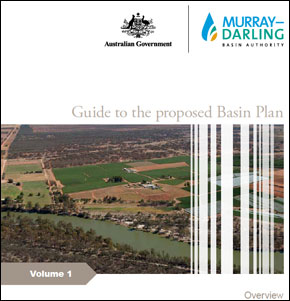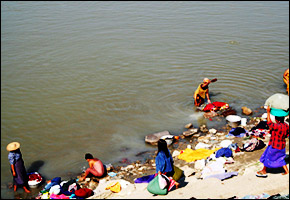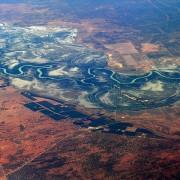Murray-Darling Basin Plan Angers Australian Farmers
A government plan to reduce irrigation diversions has farmers up in arms.
Residents of Australia’s Murray-Darling River Basin reacted angrily this week to the proposed water cuts outlined in a newly released guide management plan for the basin.

The guide is the first step in a process of adopting new water use regulations in Australia’s largest river system.
“I want to emphasize that the release of this guide provides an opportunity for Australians to contribute to one of the most significant water reforms in our history,” said Mike Taylor, MDBA chair, during a press event at the National Convention Centre in Canberra last week.
Indeed, residents of the basin have been contributing to the discussion in both word and deed.
One woman in Shepparton, Victoria, wore a noose around her neck at a scheduled meeting with visiting MDBA representatives, the Shepparton News reports.
Meanwhile, protesters outside an information session in Griffith, New South Wales, used copies of the guide to start a bonfire. An estimated 4,000 of the town’s 15,800 people showed up at the meeting, according to The Sydney Morning Herald.
“All I can see is my future and my children’s future being flushed down the toilet at the moment,” a speaker at the Griffith meeting said, according to the Australian Broadcasting Corporation.
The public will have the opportunity to voice dissent. The MDBA will hold 28 community information sessions over the next five weeks to gather comments. Those concerns will be considered before the draft basin plan is released in the next few months. There will be another public comment period before the final plan is sent to Australia’s water minister for approval, which is expected in late 2011.
At the center of the controversy are the sustainable diversion limits (SDLs) — the amount of water that can be removed from rivers for consumptive use. Current basin-wide diversions of 13,700 gigaliters do not leave enough water in the river system for it to function properly.
The MDBA, which was formed by the National Water Act of 2007, was charged with determining environmental water requirements and forming a plan to reduce consumptive withdrawals while balancing social and economic effects.
The MDBA divided the basin into 29 regions and tailored cuts to the local hydrology and current diversion intensity.
The cuts will affect the areas that grow wheat, rice and cotton more than those that grow high-value fruits and nuts. Agricultural areas without diversified economies will also feel the pinch. These include Moonie, Gwydir and Barwon-Darling in the northern basin, and Murrumbidgee, London and Murray in the southern basin, according to the draft plan.
The economic consequences of the cuts are the most hotly debated issue. The draft plan estimates an $800 million annual loss in irrigated agriculture and the elimination of 800 full-time jobs, but the MDBA is uncertain about multiplier effects in farming communities, where much of the economic activity indirectly supports agriculture. Officials said on Friday that these figures might be too low, according to The Sydney Morning Herald.
In response, Australia’s Parliament announced its own inquiry into the economic repercussions.
There is also concern that banks will use the information to foreclose on farms in areas with large projected cuts. The chief executive of the Australian Bankers’ Association said that banks were not foreclosing but were concerned about the guide’s effects on rural communities, The Australian reports.
Some have criticized the MDBA for not highlighting that a portion of the cuts has already been achieved under current government buyback schemes, The Sydney Morning Herald reports.
The lower diversions will be phased in slowly, with full implementation of the plan not expected until 2019. Implementing the new plan falls on each state in the basin.
Sources: The Sydney Morning Herald, The Age, Shepparton News, Australian Broadcasting Corporation, The Australian
Read more about Australia’s water on Circle of Blue.
Brett writes about agriculture, energy, infrastructure, and the politics and economics of water in the United States. He also writes the Federal Water Tap, Circle of Blue’s weekly digest of U.S. government water news. He is the winner of two Society of Environmental Journalists reporting awards, one of the top honors in American environmental journalism: first place for explanatory reporting for a series on septic system pollution in the United States(2016) and third place for beat reporting in a small market (2014). He received the Sierra Club’s Distinguished Service Award in 2018. Brett lives in Seattle, where he hikes the mountains and bakes pies. Contact Brett Walton










Leave a Reply
Want to join the discussion?Feel free to contribute!